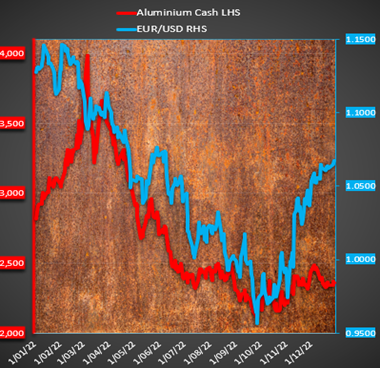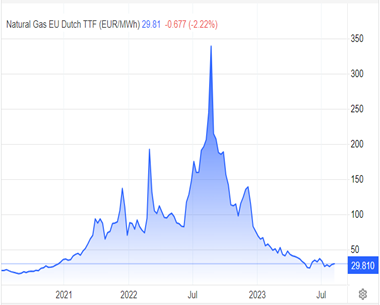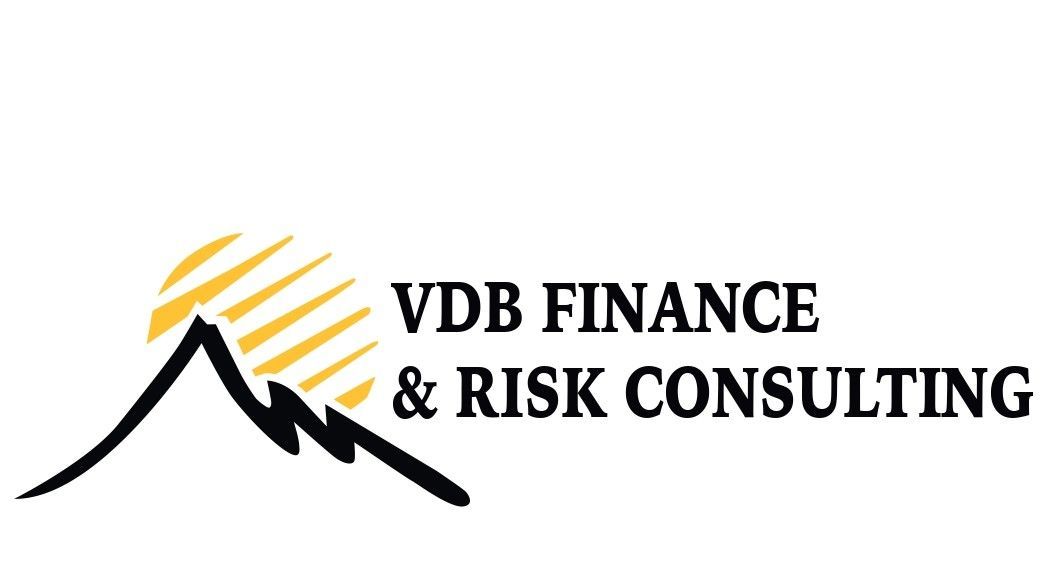Van den Broeck
Finance & Risk Consulting
VISION
My aim is to deliver tailor-made consultancy on financial risk management and how to mitigate the risks related to:
- adverse movements in foreign currencies on accounts receivables/payables
- high volatility in commodity prices (gas, oil, metals, electricity…)
- interest rate exposures

EUR/USD dropped from 1.15$ to 0.95$ between January and September 2022.
If your company has a project in dollars starting in January and payable in September this project is 20% more expensive at payment date than when negotiated, unless if you hedged your $ with your bank.
Aluminium prices dropped from 4,000$/mt to 2,000$/mt in the same period.
A company holding Aluminium in inventory is seriously affected by this price drop, unless if you hedged your aluminium with your broker.
European Natural gas prices rose from 30 EUR/MWh to 100 EUR/MWh in 2021 mainly due to the nuclear fallout in France.
After the Russian invasion of Ukraine, Natural gas prices peaked at 345 EUR/MWh to drop back to 30 EUR/MWh in 2023.
Prices increased by more than factor 10.
A company unable to pass-through this price explosion to its customers has huge problems, unless if you hedged your gas demands with a hedge provider or on the exchange.

RISK STRATEGY
In my view a Risk Strategy should be embedded in the Company’s Strategy and in the day-to-day practices.
When starting with Risk Management I recommend starting with a step-by-step approach.
1. Indentifying The Risk
Is your company exposed to adverse movements in foreign exchange for future account payables or receivables in foreign currencies?
Are you burning cash?
Or do you hedge your foreign exchange exposures with your bank?
Can you pass through sudden increases in commodity prices, like oil, gas, electricity, base and precious metals used in your supply chain, to your customers?
The whole process from mining to architecture will take years to complete.
Though in each step the exchange price of the metal will be a significant price driver in the supply chain. Metal prices can be extremely volatile and can jeopardize the whole project, unless if you have a proper hedging strategy in place.
Additionally, these processes are very energy intensive. It is worthwhile to have a look at hedging gas and/or electricity prices.
From Mining...
...to molten Metal...
...to coils...
...to architecture.
Does your company process commodities and is there a time-lag between the moment of buying the raw material and selling the finished goods?
A detailed description of the supply chain and the different timing of pricing the various components is key.
The risks are then bundled into a report and presented to the Management Committee or the Board of Directors.
2. Risk Policy
Once the risks are known to the Management Committee and Board of Directors a decision needs to be made on what risks are acceptable and which risks should be offset through active risk management.
The goals, timing and limits of risk management are then defined in a Risk Policy.
3. Risk Tools & Counterparties
Once the Policy is clear you can think about the tools you want to use to mitigate the price exposures.
Are their natural hedges available in the supply chain?
Can you access a regulated exchange, or do you need to use over-the-counter (OTC) derivatives?
Which counterparties can accept your credit profile and vice versa?
Each bank or broker will conduct an extensive Know Your Counterparty (KYC) analysis before granting credit lines. This KYC can be time-consuming. It is advisable to start this process immediately after Management’s approval. Hence step 2 and 3 can coincide.
To set up relationships with reliable counterparties and negotiating credit lines requires an experienced market participant with an extensive network.
4. Development controls and reports
Build sufficient controls to ensure that hedges executed with brokers or banks are offsetting the price exposures within the company. This requires not only daily confirmations of the hedges executed, but also regular reconciliations of the actual inventory and the hedge position.
Design management reports on outstanding exposures, P&L impact, use of credit lines.
Write clear procedures and guidelines for all departments involved in Risk Management.
5. Training
To implement Risk Management, it is crucial that the management team understands the main goal is mitigating price risks and protecting EBITDA and not speculation.
Next to the management committee, many other teams are involved and require adequate education.
Sales and procurement teams, since they manage goods with prices derived from exchange- or OTC-traded commodities. These departments also create accounts receivable/payable in foreign currencies and as such a foreign exchange risk.
Finance department will need the input from the hedging activity for accounting purposes, and to properly settle the difference accounts with the banks and brokers upon settlement.
Controllers to reconcile the hedge book with the broker positions and the hedge book with the actual inventory considering under and over-deliveries or late and early shipments.
Legal department to underwrite the contracts with new counterparties and to negotiate with the hedge counterpart all legal documents needed for onboarding and optimizing credit lines.
IT, as adequate Risk Management requires IT resources. Having a performant ERP-system in place is a big advantage since data accuracy is crucial. Lacking an ERP-system will need more controls to avoid mismatches based on incorrect data. Risk management tools can be purchased at specialized companies or can be built internally like I did at Aludium.
BIOGRAPHY
Academic background:
- Master in Economics, K.U. Leuven
- Master in Business Administration, V.U. Brussels
30 years of trading experience, 15 years in capital markets and 15 years in industrial organizations.
For 15 years I worked on trading desks of major Belgian banks as a trader in:
- Fixed Income, trading and market making in Corporate and Government Bonds,
- Foreign Exchange and Foreign Exchange Options,
- Derivatives trading by using Futures and Swaps on exchanges and OTC-markets.
In 2008 I made a career switch to the industrial world and started working as London Metal Exchange and Bullion dealer at Nyrstar Belgium. In this role I was managing Nyrstar’s daily exposures in both base metals (Zinc, Lead and Copper) and precious metals (Gold and Silver)
In 2010 Nyrstar moved his headquarters to Zurich and I was promoted to Commodity Risk Manager. Next to the daily management of the above-described exposures I was actively involved in strategic long-term hedges for our metal business by using options. Additionally, I became a member of the Energy Price Committee in which long term hedges on power and gas were discussed.
In 2015 Aludium was founded as an equity carve-out from three Alcoa rolling mills, two in Spain and one in France. I was the first person from outside Alcoa and started as a Director Risk Management on January 1st 2015.
My main responsibilities were hedging the metal flows in Aluminium on the London Metal Exchange, covering the foreign exchange risk of our future accounts payable/receivable in foreign currencies, building a new Risk management team, and training the different departments involved in Sales, Metal Procurement and Finance.
Contact details:
Vdb Finance and Risk Management
Hollandstraat 64 B
2220 Heist-op-den-Berg
Belgium
VAT: BE 0773.443.356
